Press Release
NASA’s Balloon Mission GUSTO Mapping the Space Between the Stars
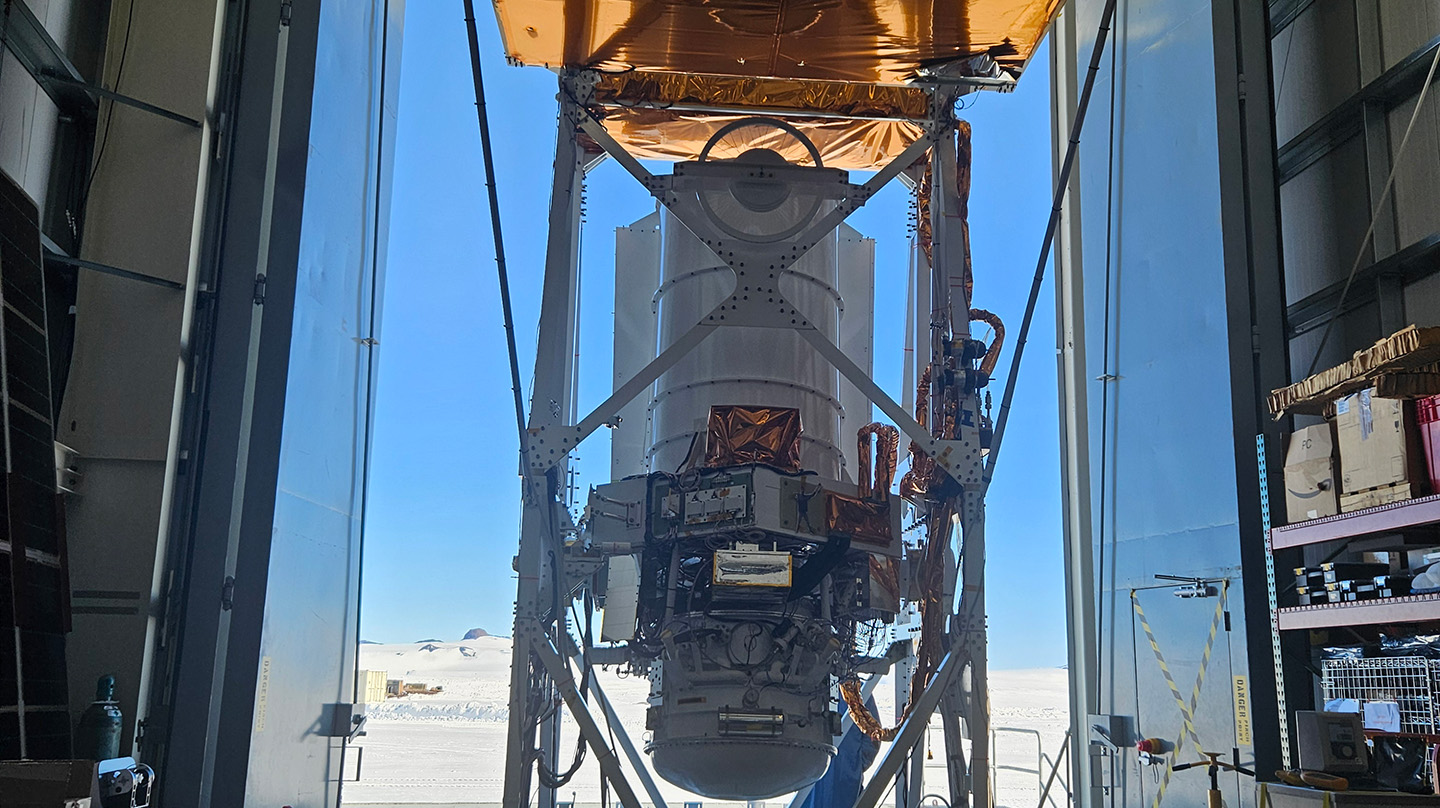
The GUSTO telescope hangs from the hangar crane during telescope pointing tests at the Long Duration Balloon Facility on the Ross Ice Shelf near the U.S. National Science Foundation’s McMurdo Station, Antarctica, on Dec. 6, 2023. Mission specialists were calibrating the star cameras, used to determine the direction of pointing of the telescope. View the full image.
Credit: José Silva on behalf of the GUSTO team
Editor’s Note
GUSTO successfully launched from Antarctica on Dec. 31 at 7:30 p.m. local time (1:30 a.m. EST). The balloon is floating 128,000 feet above Earth’s surface. You can track its journey around the South Pole in real-time on NASA’s Columbia Scientific Balloon Facility website.
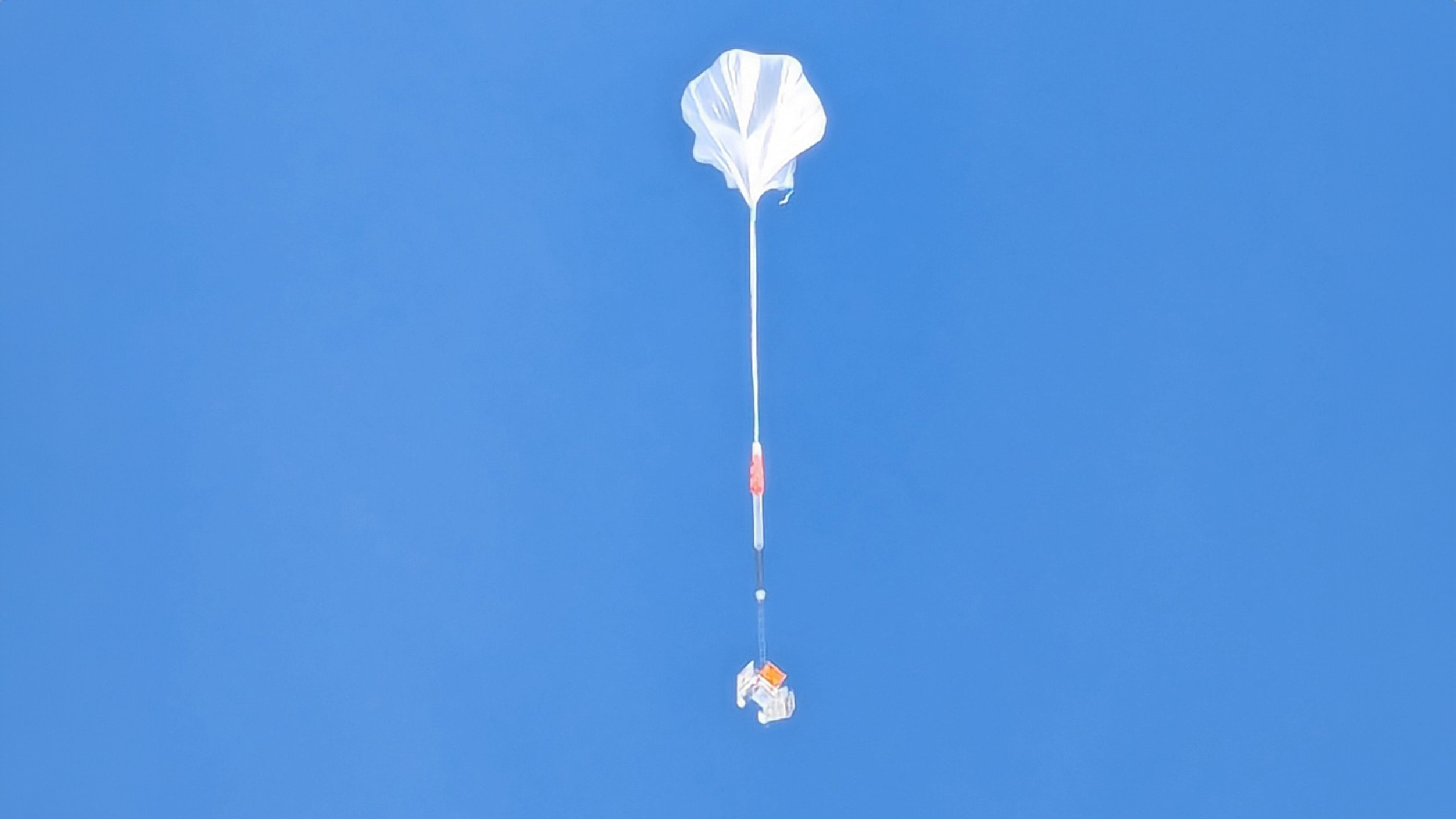
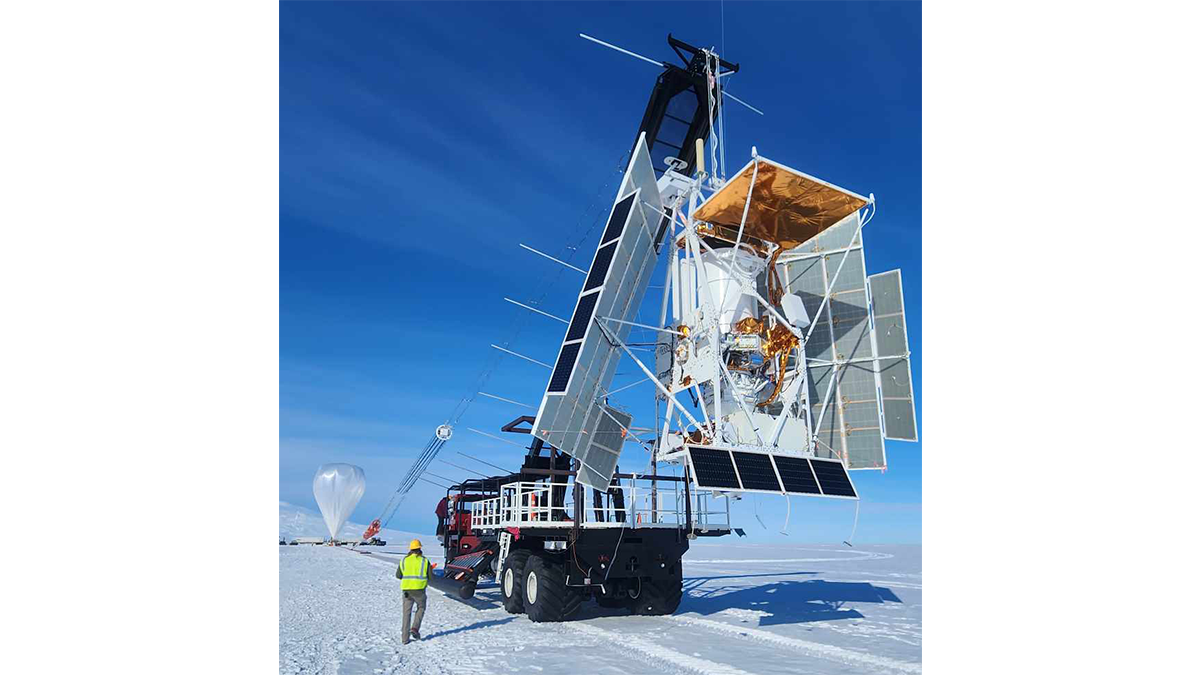
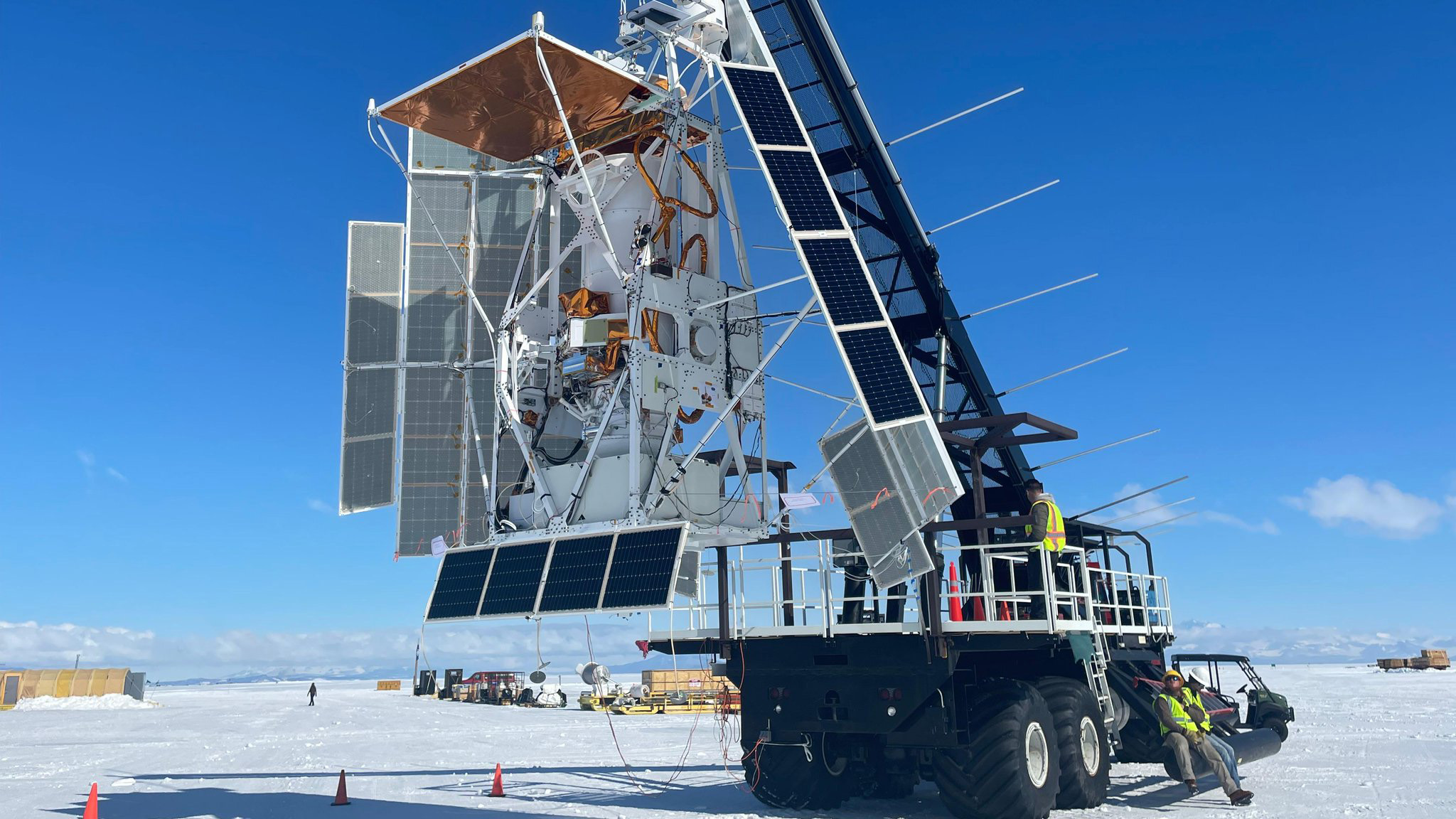
Scientists and engineers near McMurdo Station in Antarctica are preparing to release a NASA experiment to explore the universe by balloon.
Scheduled to launch no earlier than Dec. 21, the airborne telescope called GUSTO — the Galactic/Extragalactic ULDB Spectroscopic Terahertz Observatory — will peer between the stars from roughly 23 miles (37 kilometers) above Earth’s surface. There, the observatory, while suspended from a balloon the width of a football field, will spend at least 55 days examining a 100-square-degree area of the sky, using far-infrared detectors to help scientists make a 3D map of a large part of the Milky Way and determine the abundances of elements critical to life, including carbon, oxygen and nitrogen.
“With GUSTO, we’re really trying to trailblaze,” said Kieran Hegarty, program manager for GUSTO at the Johns Hopkins Applied Physics Laboratory (APL) in Laurel, Maryland, which leveraged its more than two decades of experience building and flying balloon missions to design and build the project’s solar arrays and the gondola that will carry the telescope. “We want to continue to demonstrate that balloon investigations return compelling science.”
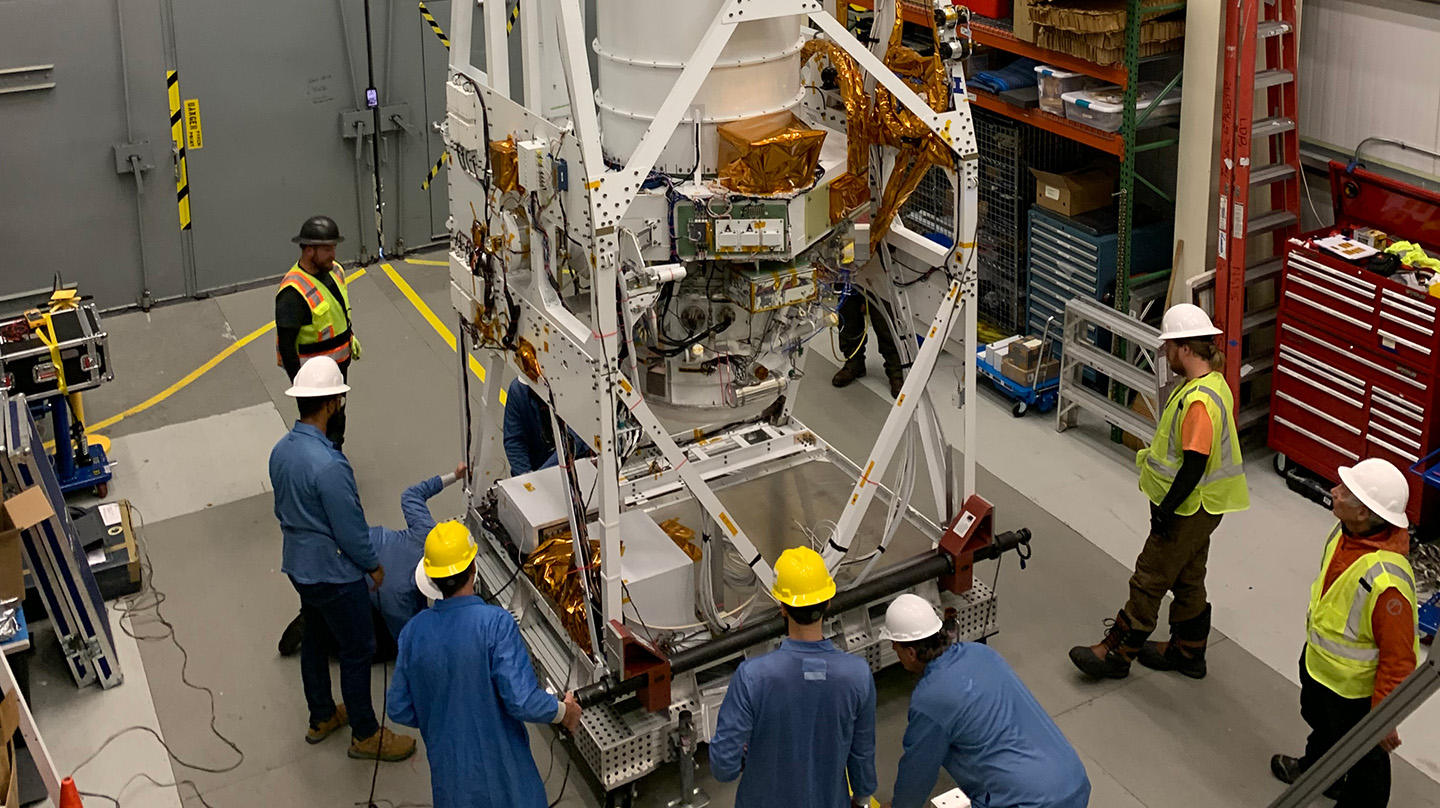
The GUSTO telescope is seen on Nov. 9, 2023, as Columbia Scientific Balloon Facility personnel assist the GUSTO team in flipping the observatory from a horizontal to a vertical position. The photo was taken at the Long Duration Balloon Facility on the Ross Ice Shelf near the U.S. National Science Foundation’s McMurdo Station, Antarctica. View the full image.
Credit: José Silva on behalf of the GUSTO team
As the first balloon-borne experiment in NASA’s Explorer program, GUSTO will have the same scientific reach as the agency’s spaceborne satellites, such as TESS (the Transiting Exoplanet Survey Satellite) and IXPE (Imaging X-Ray Polarimetry Explorer).
Functioning as a cosmic radio, GUSTO will “listen” to high-frequency signals emitted by carbon, oxygen and nitrogen atoms within enormous molecular clouds of dust and gas that accumulate between the stars. Such observations are impossible to do with Earth-based telescopes because of water vapor in the atmosphere, which absorbs the light emitted from these atoms. GUSTO will fly above most of that water vapor. “For the type of science we do, it’s as good as being in space,” said Chris Walker, principal investigator of GUSTO at the University of Arizona.
As the telescope follows air currents around the South Pole, scientists will map the intensity and velocities of these signals, allowing them to later connect the dots and create an image of the emissions.
What’s more, GUSTO will reveal the 3D structure of the Large Magellanic Cloud, or LMC, a dwarf galaxy near the Milky Way. The LMC resembles some galaxies of the early universe that NASA’s James Webb Space Telescope is exploring, but being billions of light-years closer, the LMC will be much easier for scientists to examine in detail.
“By studying the LMC, comparing it to the Milky Way, we’ll be able to understand how galaxies evolved from the early universe until now,” Walker explained.
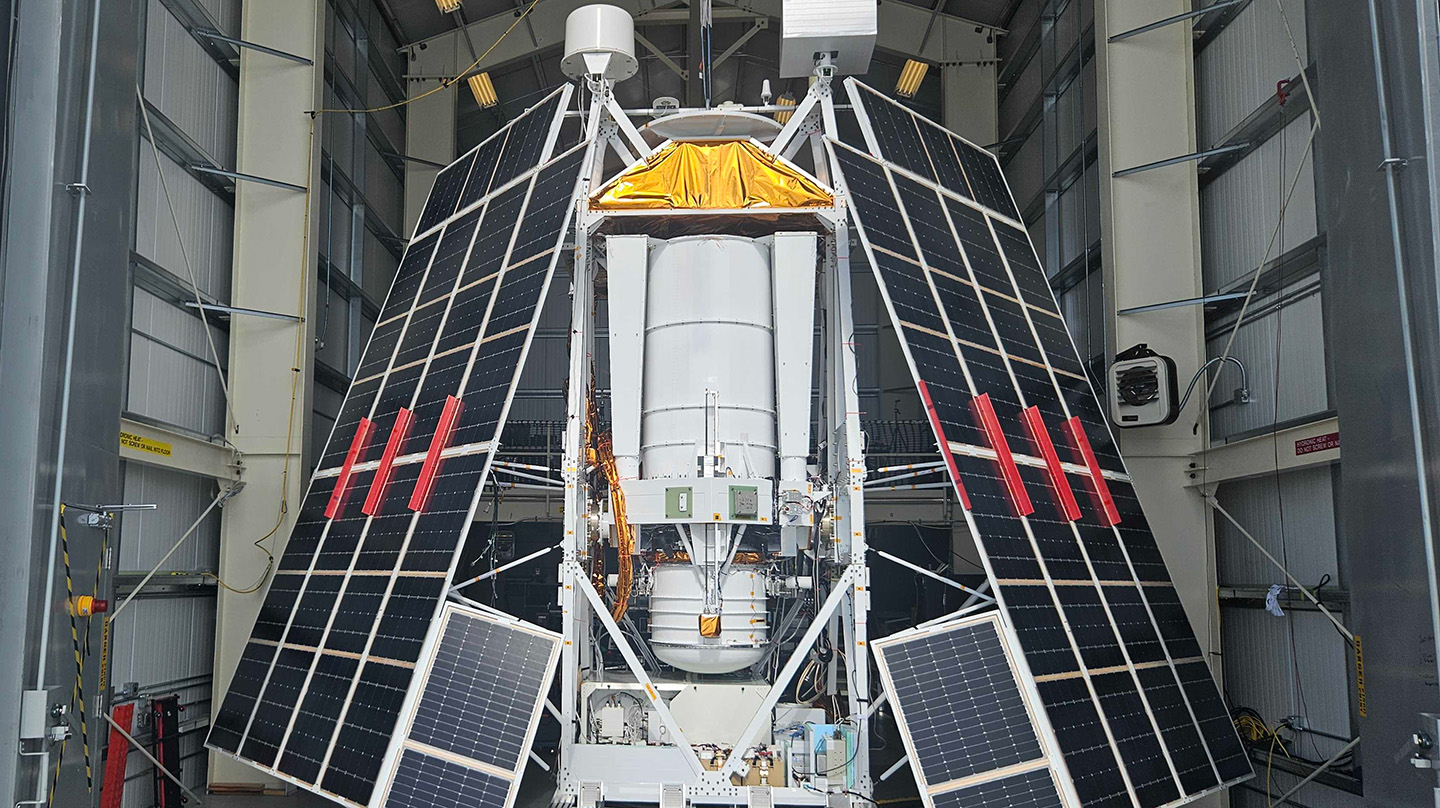
The GUSTO telescope, with solar arrays mounted on the gondola that holds it, sits in the Long Duration Balloon Facility on the Ross Ice Shelf near the U.S. National Science Foundation’s McMurdo Station, Antarctica, on Dec. 17 during final preparations before its launch later this month. View the full image.
Credit: José Silva on behalf of the GUSTO team
With seals and penguins nearby, a dozen mission team members from APL and the University of Arizona are performing the final checks before GUSTO’s launch. Once in the air, the APL team will monitor the health and status of the gondola while data collected by the observatory will be transmitted back to the team at the University of Arizona science operations center for analysis.
For Walker, the project represents some 30 years of effort, the outgrowth of many experiments from Earth-based telescopes and other balloon efforts.
“We all feel very fortunate and privileged to do a mission like this — to have the opportunity to put together the world’s most advanced terahertz instrument ever created, and then drag it halfway around the world and then launch it,” he said. “It’s a challenge, but we feel honored and humbled to be in the position to do it.”
GUSTO is a collaboration between NASA, the University of Arizona, APL, the Netherlands Institute for Space Research (SRON), Massachusetts Institute of Technology, the Jet Propulsion Laboratory, the Smithsonian Astrophysical Observatory and others.
Adapted from a NASA release
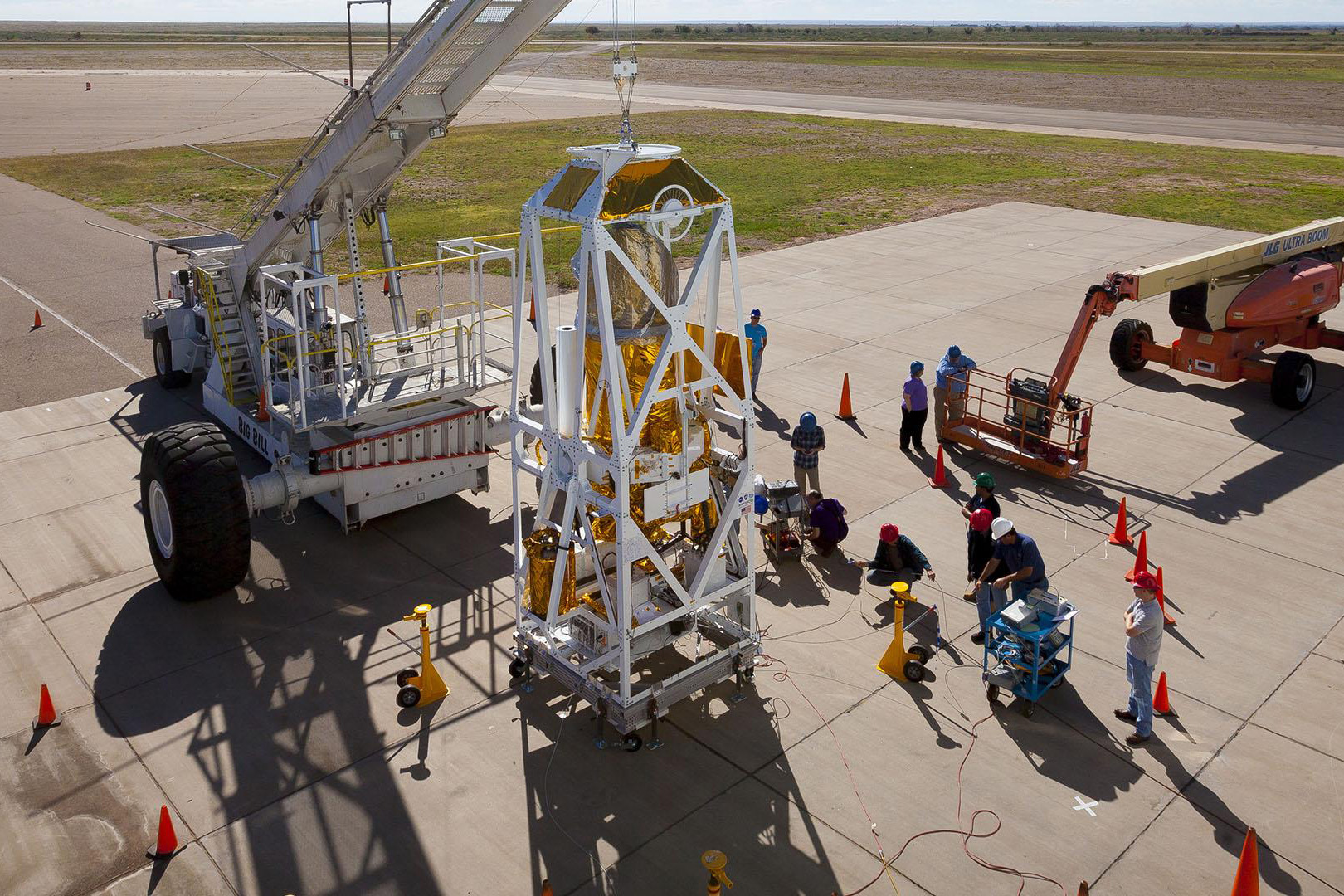
Balloon Programs →
APL balloon missions and instruments observe planetary targets and the interstellar medium, and conduct other space science investigations. Learn more about GUSTO and other balloon programs.
Areas of Impact
Mission Area
The Applied Physics Laboratory, a not-for-profit division of The Johns Hopkins University, meets critical national challenges through the innovative application of science and technology. For more information, visit www.jhuapl.edu.